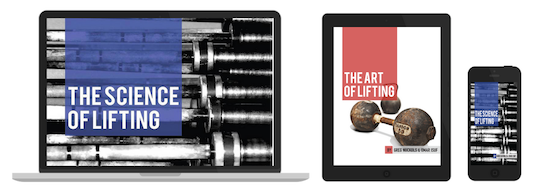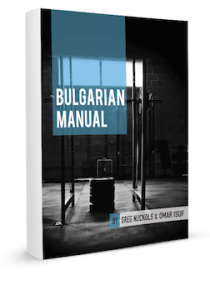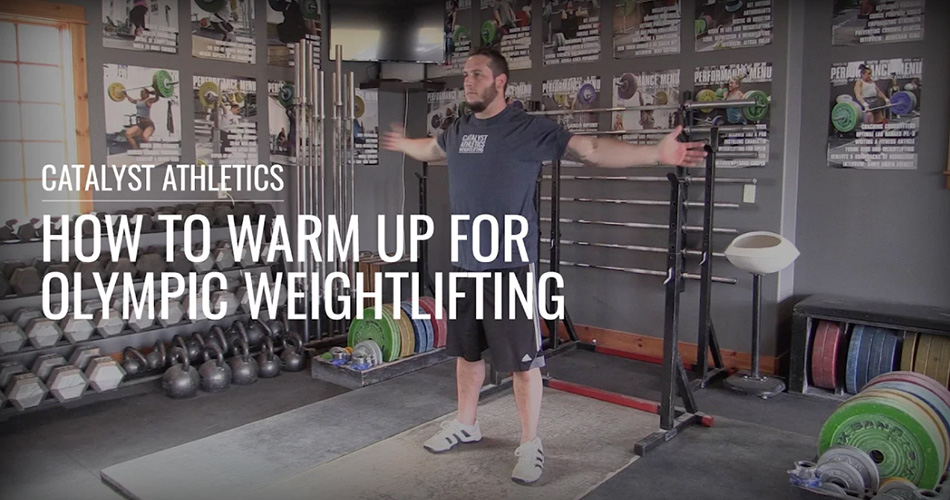Interview with Greg Nuckols
If you are not familiar with Greg Nuckols, shame on you. Greg is fascinating lifter and even better writer that manages to cut through the noise to understand what really makes a performance difference. He managed to reconcile thinking and thinkering (as Taleb would say), both theory and heuristics, both theory and practice of strength training.
Greg runs great website Strength Theory and he has just published two great books: The Art of Lifting and The Science of Lifting which are great reads. Please make note that this is not your average “pimp my product” interview – I claim no benefit on the sales and the interview was sent weeks before anyone knew about the up and coming (shameless plug: GREAT) products. I wanted to pick Greg’s brain on some topics that “bothered”/”bothers” me. Hopefully, you will find Greg’s answers as insightful as I did. Enjoy.
Mladen: Greg, most of my readers probably read you blog and are already familiar with you work, but anyway can you share couple of things about yourself? Where do you come from, where are you heading?
Greg: I’m from a small town in the American South. I’m really not sure where I’m headed. I’m not much of a planner. I just do the things I’m passionate about and try to progressively do them better, then just walk through whatever doors that opens for me. It’s always been my experience that if you work hard and you treat other people well, good things generally happen, so I suppose I’m heading in whatever direction that takes me. I’m sure that answer drives my wife (and business partner – she’s the brains behind the whole operation) crazy. She’s the Apollo to my Dionysius.
Mladen: When it comes to building strength, what is your take on nature~nurture? How can one tell is one is going to be really strong?
Greg: That’s a tricky question. On one hand, humans are all 99%+ genetically similar, and on the other hand, it certainly seems like there are tremendous genetic differences in terms of trainability and potential across the spectrum of physical attributes. Just based on my experience, though, nature almost always trumps nurture. “Hard work beats talent when talent doesn’t work hard” and other such platitudes may apply when comparing a hard worker who’s on the cusp of being genetically elite to a slacker with truly elite genetics, but at the end of the day, someone with world-class potential who applies just a modicum of effort will usually destroy a very hard worker with average potential.
I don’t think there’s any way to tell for sure someone will be really strong, but the strongest predictor I’ve found is joint size. Part of it is the pure physics of the situation – if someone’s joint is 50% thicker than average, then force applied at that joint will be a bit further from the axis of rotation, which means more torque at that joint. But also people with thick joints just tend to be more durable and can handle more training without getting banged up. I can’t pretend like I have any science whatsoever to back that up, and I’m sure you could probably develop more precise screening tools with access to hormonal, genetic, and signaling pathway information, but just based on my own observations, joint size is a better predictor than their strength when they start lifting.
Mladen: Talking about similar topic, what is your take on training the novice lifters? Thoughts on Starting strength-alike programs and even on a classification they utilize (novice, intermediate, advance)? What about “confounders” like other training (e.g. sport practices) and different goals (e.g. aesthetics, health, strength, improved performance)? Can you share a simple program you found useful with your athletes/clients?
Greg: I think with any athlete, the most important step is buy-in. Excitement about and investment in the process. That’s ESPECIALLY true for beginners. People who have been at it a while are generally to the point that they just love lifting weights and it’s basically become a part of their identity. Keeping the process fun and interesting is still important, but not quite as important. For a beginner, though, you’re usually dealing with someone who has a great deal of initial resolve and excitement, but it’s much more fragile because training hasn’t become part of their identity yet.
So I don’t really think, “do basically the same workout every time you go to the gym, but add 5 pounds to the bar” is the best thing for most people. Physiologically I don’t have many major quibbles with it – I have a few minor ones, but plans like that certainly accomplish progressive overload and have a healthy respect for the SAID (specific adaptations to imposed demands) principle, which are the two main things you need to be concerned with for any athlete, but especially for a beginner.
However, going back to buy-in and becoming invested in the process, I think that for many people, training routines like that squander that precious initial excitement and just make training a grind. There certainly are people who really dig it – having that easily quantifiable progress every time they hit the gym is super motivating for them. But most people generally enjoy and appreciate a little more variety. I think it’s ironic that the people who have the most to say about the evils of “program hopping” never seem to stop and wonder if boring programming is the reason people are program hopping in the first place. Sure, it may be great if people actually do it, but if there are that many people who can’t stick with it, it’s somewhat irrelevant if it’s a good program or not. You have to take into account athlete psychology, not just physiology. When working with beginners, they don’t have a ton of intrinsic motivation to train (it’s not a part of “who they are” yet) so to get them to stick with a program, the program itself needs to provide sufficient extrinsic motivation (fun) to fill that gap.
Going back to differences in genetic proclivity for lifting, I think the novice/intermediate/advanced classifications are pretty arbitrary and not overly helpful. If you classify it by strength level, plenty of people who are surely “novices” will reach intermediate or advanced strength levels quite quickly, and conversely, plenty of people who are surely “advanced” (have been training intelligently for quite a few years) may never progress past arbitrary intermediate strength standards. Where I do think they have some merit is in classifying people by the rate they can make quantifiable progress (i.e. a beginner can make progress workout to workout, intermediate every week or two, and advanced takes a month or longer).
Other goals and other training certainly factor in as well. Different sets of goals obviously need different sets of standards where strength wouldn’t be the only criterion.
Want to understand Bulgarian lifting? Sign-up to Greg’s newsletter and get this great manual for FREE!
Mladen: I recently wrote about differences between Sheiko and Westside. What are your thoughts about them? What about “high-frequency” lifting that seems to be popular now? DUP? Is there “free lunch” when it comes to planning training? Are some programs overly prescriptive? Thoughts on stability~variability in training parameters (e.g. exercise rotations and/or set&rep schemes rotations?) and prescriptive~reactive aspects of training programming?
Greg: I don’t think this answers your question directly, but there generally seems to be two extremes of planning training that work really well.
On one hand, you have a more frequent, lower intensity, volume-driven model. Sheiko, RTS, and DUP would all fall under that umbrella. On the other hand, you have a less frequent, somewhat lower volume (at least for main lifts – usually the volume comes from accessories) intensity-driven model. Westside, the Lilliebridge Method, and a lot of the programs of the 80s-90s fall under that umbrella.
They both make sense in their own right. The higher frequency/volume approaches give you more practice with submaximal weights to ingrain good habits and give you a lot of fairly specific skill practice. The higher intensity approaches provide the most specific practice possible – lifting near your limits, and being pretty fresh for your heavy workouts so you can reach true maximum intensity, rather than have that threshold being lowered a bit by training with some accumulated fatigue – though this necessitates lower frequency for adequate recovery. It actually reminds me a bit of how sprinters train, with many sprint coaches seeing no value in speed work that can’t be performed within 5%ish of the athlete’s maximal output, and therefore structuring the training week so that the “volume” work causes as little fatigue as possible (in the case of powerlifting, doing more accessory lifts instead of getting your volume in via more submaximal squats, presses, or deadlifts) so that the maximum output work is truly maximum output.
Both approaches make sense within the framework in which they operate, but it doesn’t seem like that’s a happy medium between the two, at least within a single training block. They operate on different sets of principles, so you can’t really mash them together.
In my opinion, Chad Wesley Smith does a better job than anyone else of integrating both of these extremes into a broader training plan. His meet cycles start with the lower intensity, higher volume, higher frequency training, but by the last four weeks frequency is low to allow for full recovery between sessions so that he can achieve maximal output (the most specific sports practice for powerlifting) to more fully develop that skill before a meet.
Mladen: How do you individualize the training for a particular lifter? Do you plan for progressions or “let it happen”. Thoughts on RPE as an augment feedback?
Greg: That largely depends on the lifter. Some people love the process-orientation of RPE-based training and really thrive with it, feeling like it empowers them to take ownership of their training, but feel too confined if the training is overly structured.
Other people prefer the more structured approach. They like black-and-white plans, putting their nose to the grindstone, and thinking “if I do these set and reps with this weight I will get stronger.” If they use RPEs, they end up getting in their own heads and psyching themselves out, but as soon as you give them more structure, they trust the process, work their asses of, and get great results.
I do let progressions happen naturally, though. For lifters in the first category, it’s trying to lift more at a certain RPE, or hitting the same weight at a lower RPE, with weights increasing as that happens. For lifters in the second category, it’s usually based on rep maxes, and adjusting training weights based on how many reps they can hit with 85% or 90% of their own training max.
Train smarter by signing up for a newsletter and receive FREE 28 Training Programs
Mladen: Any experience with using velocity based feedback with strength training? Do you think this might be the next best thing or a fluke?
Greg: I’ve personally played with it some, but haven’t used it with enough of my lifters yet to give you a super strong opinion. It’s been useful for me – I can gauge how my 1rms are doing without having to push myself with maximal loads, and (largely based on your articles, my own experiences, and great client feedback thus far) I recommended it in the Bulgarian Manual I recently released, and have heard unanimously positive feedback from people who have used it with that style of training.
At this point, I can’t say for sure it’s the next big thing, but I’m certainly optimistic.
Mladen: Do you use any other gadgets to modify training? Biofeedback (EMG), or any other “readiness” tools? Are these any useful and is there some truth to Broz’s “How you feel is a lie”? Does overtraining exist?
Greg: I use HRV as well.
I think that how you feel is sometimes a lie (increased perceptions of fatigue with hard training, though you can still achieve good results, and sometimes even PRs if you just suck it up and push yourself), but that overtraining certainly exists. Now, to get to a point of true overtraining, you essentially have to be able to override all the built-in self-preservation mechanisms in your body that try to stop you from reaching that point. I don’t think most people are capable of getting there under normal circumstances. But someone who is both driven and foolhardy enough can pull it off.
Mladen: What are some of your favorite sources of knowledge? Books, videos, blogs?
Greg: My three main sources of information are talking to athletes and coaches more accomplished and/or experienced than me, textbooks, and PubMed (in that order).














Responses